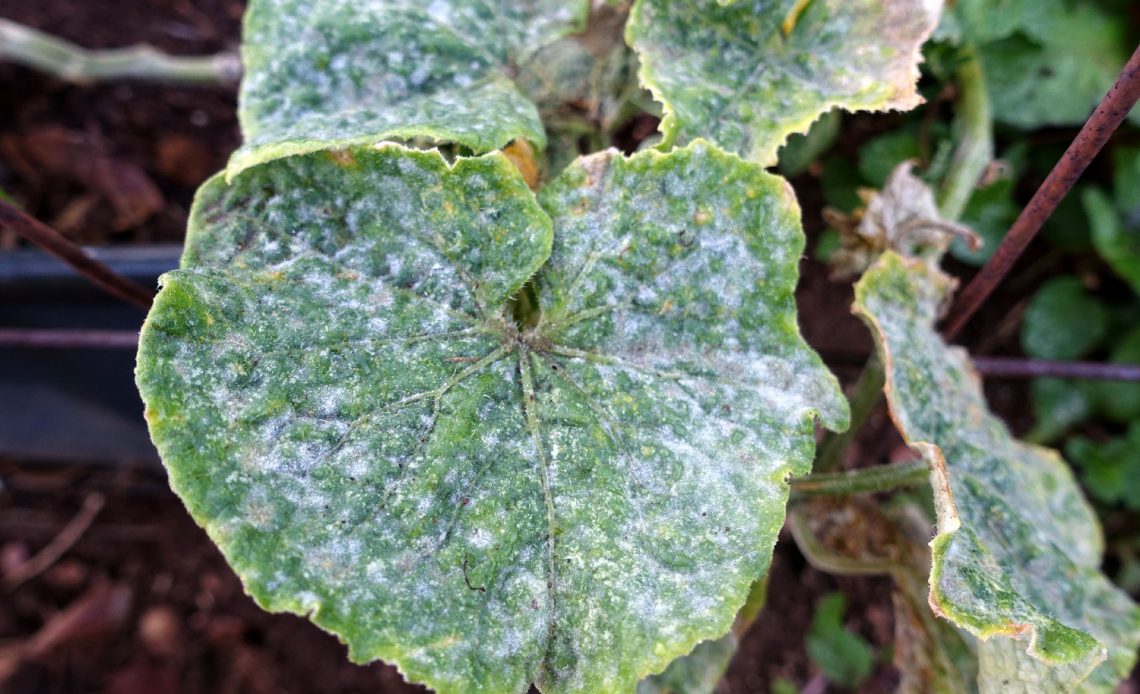

We’re here to help! Wild Yards is a completely free website that is 100% dedicated to helping you create a wildlife-friendly, sustainable yard. Read more
WildYards is reader-supported. When you buy a product through a link on our site, we may earn a comission. Every product is independently selected by our (obsessive) editors and our reviews are unbiased and objective. Read more about our mission or our privacy policy.
Cucumbers are some of the tastiest crops you’ll grow in your home vegetable patch – but sadly, they’re at serious risk from a few nasty pests and diseases. For example, if you find white spots on cucumber leaves, it’s important to take action.
Cucumber leaves with white spots are suffering from powdery mildew. This common ailment can spread from plant to plant, stunting growth and potentially killing some vegetables outright.
What exactly is powdery mildew?
Powdery mildew is a fungal disease that typically arises from two species – Erysiphe cichoracearum and Podosphaera fuliginea. These parasitic fungi cause tiny, white spots to appear flecked across your cucumber leaves.
This fast-spreading disease doesn’t just affect leaves – it can spread to branches and stems and may even sprout across the surface of your cucumbers. It can look a little gross – it makes your cucumbers look moldy. It’s rare for the mildew to spread to fruit and vegetables outright, but if left to persist, it can take over the whole of your crop.
There are other ways to spot if your plants are infected – for example, if your cucumber leaves turn yellow, it may be powdery mildew, or you may need to adjust your watering schedule.
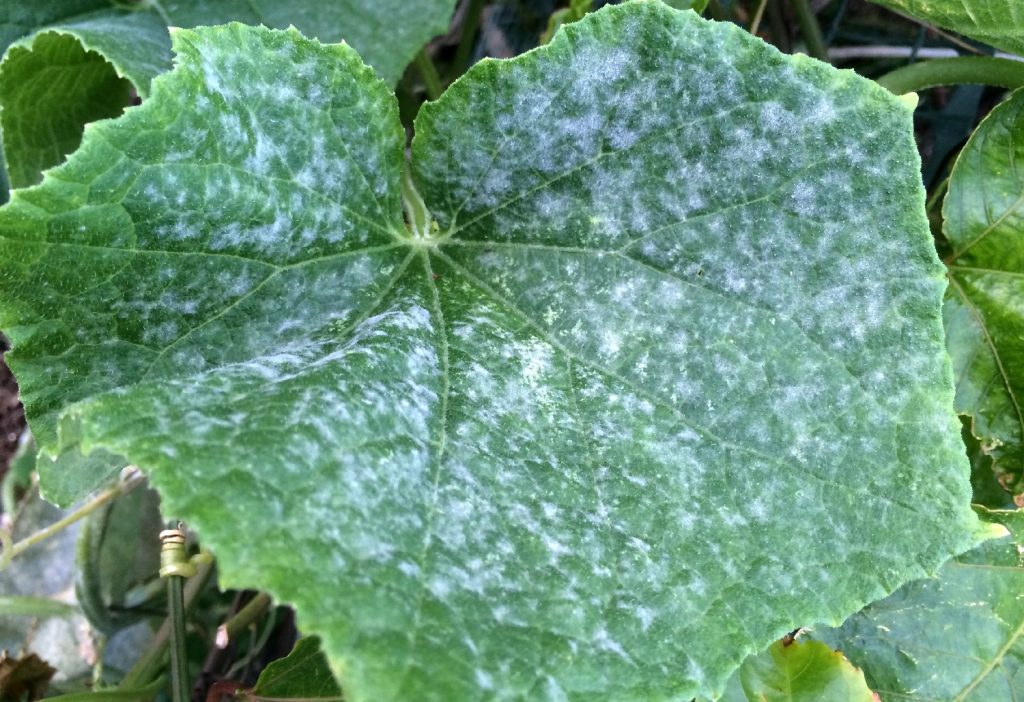
Where does powdery mildew come from?
Powdery mildew spores are very easy to spread and can infect both plants and soil. If prevalent, spores can even carry on the breeze and linger briefly on dead leaves or other organic matter. Normally, mildew needs a living host to survive.
This type of mildew can also spread through invasive insects. For example, the leafhopper, which feeds on cucumber plants frequently, may spread spores to your crops. Their feeding – nibbling at and drinking sap and juice from inside cucumbers – may also leave your plants lightly flecked in white.
Other pests that visit cucumber plants – which may carry mildew with them – include aphids, cucumber beetles, spider mites, and wireworms.
What causes powdery mildew to grow?
Powdery mildew thrives in very dark, humid, moist conditions. If your cucumbers are growing with very little access to sunlight, and if you don’t allow your soil to drain clearly, mildew is likely to appear. Treating your cucumbers this way can also cause further problems, such as wilting, yellowing of leaves, and even premature death. Before worrying about the threat of mildew, make sure you’re watering your plants adequately.
Powdery mildew can also grow wildly in spots where plants and foliage grow thickly together and leave little room for air to flow. This helps to contribute to moisture and humidity. In which case, it’s best to give your cucumbers room to breathe!
Fungi can thrive in cool and warm temperatures – typically from 60 to 80 degrees Fahrenheit, though it can also start to cluster on cucumber plants if the temperature drops below 55 degrees. Dropping below 68 degrees can also put your cucumbers at risk of diseases such as stem rot, which can kill your plants (especially if they’re already weak and spotted with mildew).
Cucumber plants are sensitive by nature and can experience stress, whether through lack of water, sunlight, or continued insect attacks. Stress and shock will lower your cucumber’s defenses, making it weaker to mildew.
Believe it or not, your watering schedule plays a large part in mildew’s growth – as it’ll thrive for as long as your cucumber’s leaves are damp. This means it’s a good idea to water your plants in the morning, rather than doing so late on and risking dew clinging to their leaves. Once it passes midday, it’s no longer wise to water your cucumbers – they’ll get more of a drink earlier in the day, too, as temperatures will be lower (and evaporation is less likely).
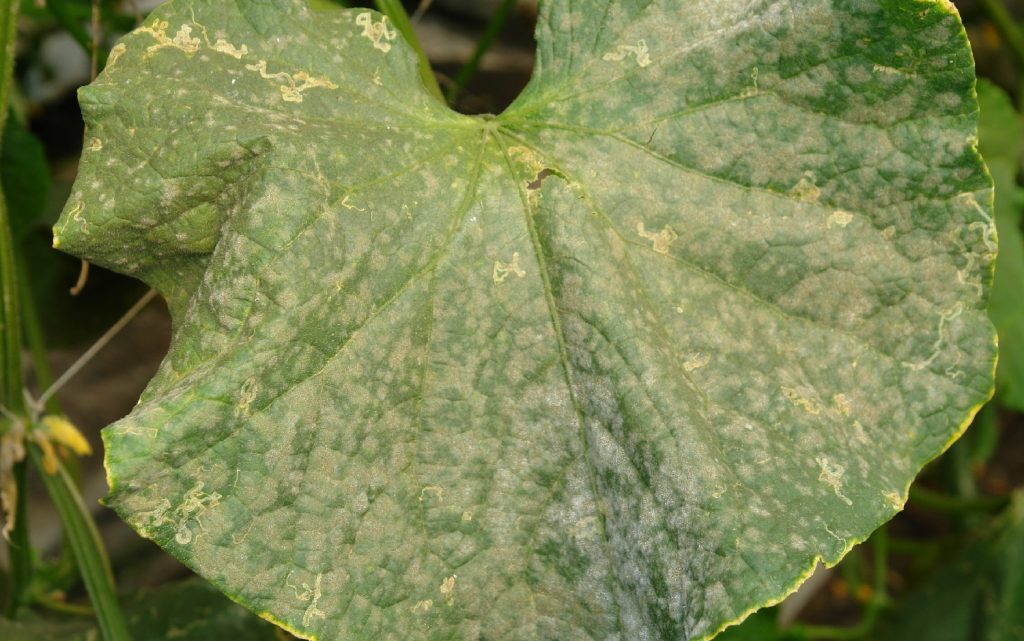
What does powdery mildew do to cucumbers?
Powdery mildew spreads thickly across leaves and stems to cover your cucumbers’ photosynthesis cells – they effectively shade your plants from the sun. This prevents them from creating chlorophyll, and thus they start to starve. This can cause wilting, stunted growth, and eventually the death of your plants.
Lack of photosynthesis (and, in turn, chlorophyll) can lead to quick defoliation and may result in poor growth in younger cucumbers. Leaves that succumb to powdery mildew may wither, die and drop altogether, leaving your vegetables at the mercy of full sunlight. Cucumbers themselves can burn in the sun – their leaves are like miniature solar panels, while also acting as parasols.
Does powdery mildew spread to other plants easily?
Typically, powdery mildew will affect and grow between specific plant families, with Cucurbitaceae being particularly vulnerable to the disease. This family consists of juicy, sensitive crops such as cucumbers, pumpkins, melons, and squashes.
Other highly susceptible plants and vegetables include begonias, peppers, roses, potatoes, tomatoes, lettuce, and parsley. The list goes on – which is why it’s prudent to restrict the spread of powdery mildew as much as possible.
Powdery mildew will spread in discarded leaves and other dead or decaying organic matter – as well as between plants in the same plot. A common mistake among gardeners is to go ahead and plant susceptible crops in the same soil as the cucumbers that were removed and destroyed for mildew! The fungi will likely still be alive in the growth medium – it’ll need thoroughly re-laying.
Some species are highly resistant to powdery mildew thanks to genetic experimentation – modern hybrids can stave off fungi without much intervention. In any case, it’s better to be safe than sorry.
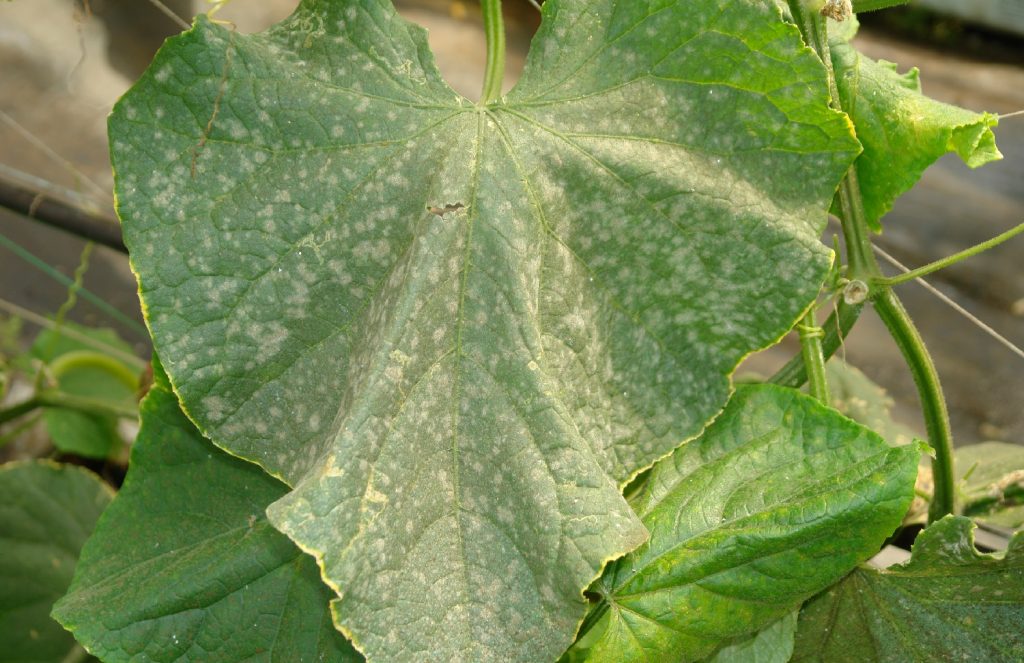
Can I get rid of powdery mildew?
Powdery mildew spores are removable if the problem is caught early enough in its life cycle. It’s sometimes possible to simply treat your cucumber leaves, or you may need to remove your plants entirely to stop the spread.
Using a fungicidal treatment
Gardeners use fungicides – chemical or otherwise – to spot-treat powdery mildew as it arises. Within a day or two, white spots can start to cluster and take over leaves and stems – so it’s vital to check your cucumber plants at least daily and treat them when necessary.
Don’t choose chemical treatments if you can avoid them – as these may have adverse effects on your soil, other plants growing close by, and any helpful insects and animals in the vicinity. Some gardeners choose to break out the baking soda, mixing a tablespoon with around a gallon of water to gently spray on cucumber leaves.
Another method for treating cucumber leaves is to purchase plant oil and mix around 2.5 tablespoons to four teaspoons’ worth of baking soda with a gallon of water. It’s worth spraying leaves carefully, and not in extremely hot weather (i.e. above 85 degrees Fahrenheit).
Covering both sides of the plants’ leaves, the aim is to raise their pH and alkalinity – making conditions less desirable for fungi to continue growing. Alternatively, you may wish to use 10% milk to 90% water as a spray – this method can sometimes stave off mildew if you act quickly enough.
It’s vital to keep up treatments of your cucumber leaves daily for at least a week. If you’re using a store-bought product, always follow what the label tells you, and use gardening gloves for protection.
Use row covers
If you suspect visiting pests are helping to worsen the mildew, using row covers may be worthwhile to blanket your crops until they dissipate. This method may not work with all invasive insects, but it’s proven to help disperse leafhoppers, who can carry the disease and stress your cucumbers further by eating away at its flesh and foliage.
You’ll generally need to remove row covers when your cucumbers start to flower – and you can safely let them enjoy the sun once more. If powdery mildew continues, additional action will be necessary.
Grow cucumbers that are resistant to powdery mildew
There are several cucumber plant hybrids that are bred to resist powdery mildew, which you’ll commonly find noted with a small ‘PM’ on seed packets.
If buying from a garden center or online, look for hybrid varieties such as Hybrid 177 or Cool Breeze F1.
Decimating your crop
In some cases, powdery mildew will spread to the point where you may need to remove your crops and start again completely. You can avoid this situation with preventative care, but unfortunately, you’ll need to remove both your cucumbers and any similar plants (such as Cucurbitaceae) growing in the same soil. If in doubt, dig them up.
Carefully remove any affected plants and those growing around, and dig up any remaining soil. You’ll need to start a new growth medium from scratch, ideally with homegrown compost and rich topsoil. Well-aerated, well-draining soil as part of a layered garden bed may help prevent powdery mildew from appearing on fresh crops.
You can, hypothetically, compost any cucumber plants and/or leaves that you remove, but do so with caution. Powdery mildew won’t thrive for long on dead or dying matter, but it can take a long time to die out (even in a compost pile or bin). If you’re concerned, throw your infected crops away – particularly if you want to use your compost for other plants and crops in your garden.
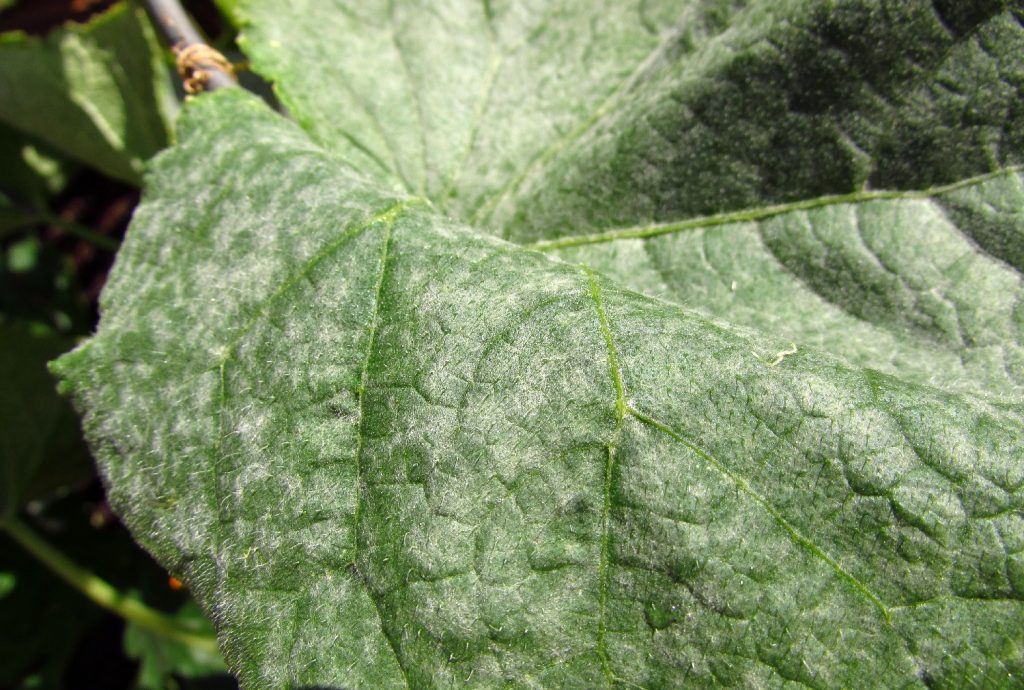
How do I stop powdery mildew from growing?
Prevention of powdery mildew is relatively simple and takes much less effort than curing the condition outright – here’s what to do.
Create lots of space
Cucumber plants generally need spacing of around four to five feet per row, with three feet between bushes also being adequate. When first sowing your cucumbers, measure around six inches between and thin or trim your seedlings further to create clearer airflow.
If your cucumber plants aren’t touching leaf to leaf, you’ll likely be protected against powdery mildew.
Choose the right spot
Full sunlight is ideal for evaporating water, dew, and other moisture that may catch on cucumber leaves. Cucumber needs its leaves to block the sun, though they’ll also need to make chlorophyll. Like all fungal diseases, powdery mildew adores growing in the dark – making bright, dry spots conducive to mildew-free growth.
Having found a spot that grants your cucumbers their minimum of six hours a day of sunlight, keep a close eye on the lowest leaves – are they damp? It’s here where powdery mildew will start to appear first, so check several times a week.
Water cucumbers properly
Consider setting up an irrigation system to water your cucumbers – as mentioned, morning watering is vital, and a drip system can automate the process, keeping your leaves as dry as possible. Ensure you water your cucumber plants at the base rather than above the leaves – to avoid unnecessary moisture.
If you wish to try irrigating your cucumbers, it’s worth trying to soak the top eight inches of their soil until it’s nice and moist. While moisture can breed mildew, providing your cukes grow in the sun, this water shouldn’t pool or puddle.
Deep watering of cucumbers on an infrequent basis (once per week is generally enough) will also help the plant’s roots to grow and dig deeper into the ground. This will help your crops stay resistant to certain stressors.
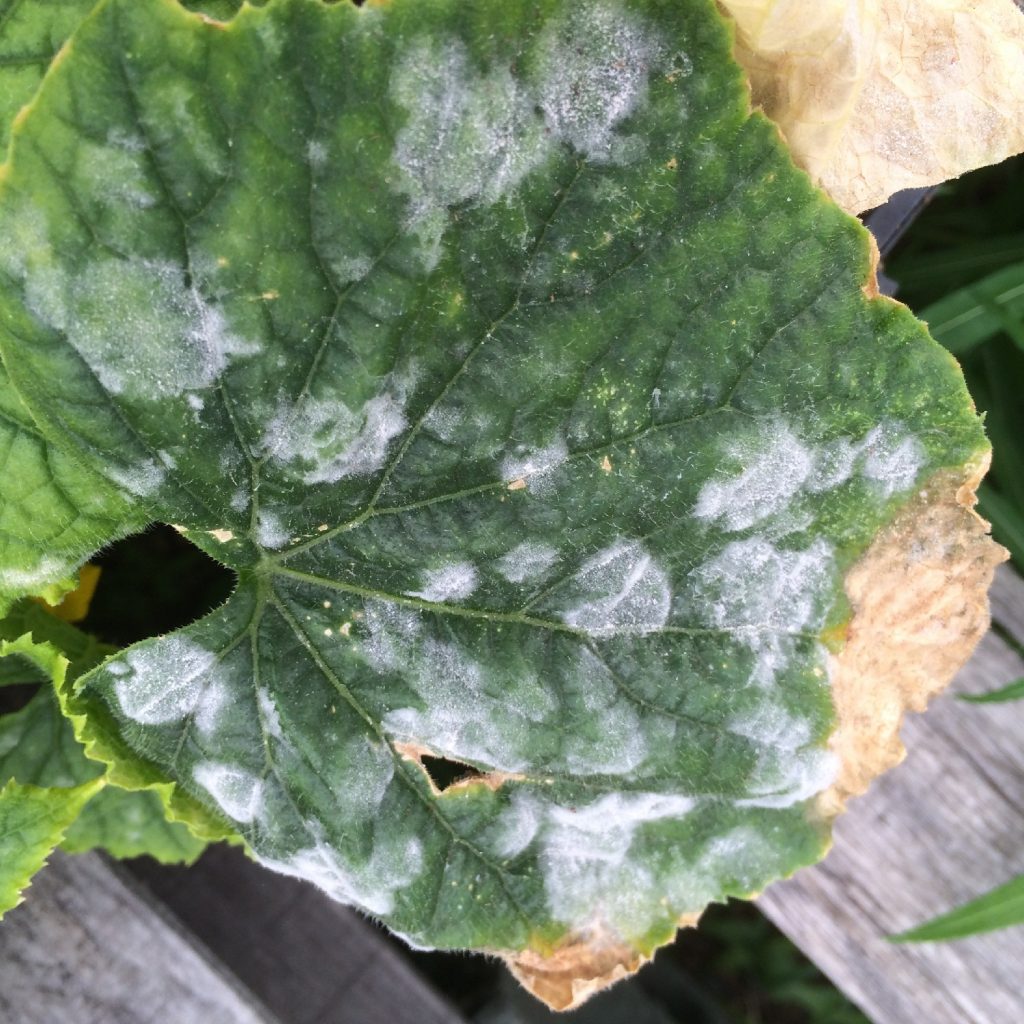
Grow companion plants
For sensitive crops such as cucumber, companion planting can help to prevent mildew, protect against pests, and to keep your vegetables growing strong and flavorsome. However, you’ll need to be careful about the companions you grow – basil and rosemary, for example, will prove highly competitive for nutrients and may stunt cucumber growth.
Alternatively, growing chamomile as a companion can help prevent the growth of certain diseases cucumber typically suffers with. Dill as a companion plant can also help prevent pests such as beetles munching away at cucumbers, potentially spreading powdery mildew.
Can I save cucumber plants with white spotted leaves?
White-spotted leaves are sadly common among cucumber plants that are stressed, thirsty, or lacking sunlight – but powdery mildew is easy to prevent and reasonably simple to cure, providing you act quickly. Cucumber succumbs to a lot of shock – which is why it’s prudent to consider companion planting, a firm watering schedule, and to position your seeds at least six inches apart.
Follow these rules, and you’ll be sure of a bountiful, tasty cucumber harvest – providing they’re growing somewhere bright, and you’re watering them once per week, it’s unlikely mildew will cause you many headaches.
